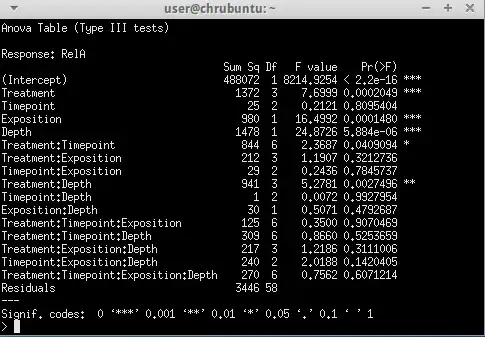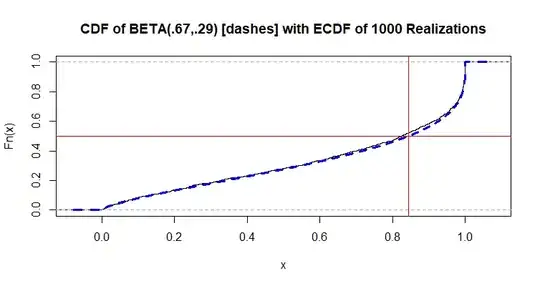You already have an answer in @jbowman's Comment, but here is some related R code, which I hope you can translate to Python--for the parts of interest.
According to Wikipedia, the approximate median of $\mathsf{Beta}(.67,.29)$ is
$\eta = \frac{\alpha - 1/3}{\alpha+\beta-2/3},$ for $\alpha,\beta > 1.$ But that doesn't work for your beta distribution which has population median $\eta = 0.8433177.$ [Improperly applied here, the approximation gives a nonsense value outside the unit interval.]
al = .67; be = .29; aprx.med = (al-1/3)/(al+be-2/3); aprx.med
[1] 1.147727 # (improper) formula
qbeta(.5, al, be)
[1] 0.8433177 # exact median
curve(dbeta(x, al, be), 0, 1, lwd=2, ylab="Density",
xlab="x", ylim=c(0,6), main="Density Curve of BETA(.67,.29)")
abline(v = 0:1, col="green2"); abline(h=0, col="green2")

A sample of size $n = 10^6$ has sample median about 0.8437. [One can show that the 95% margin of error, using the sample median to estimate the population median is about $\pm 1/\sqrt{n} = 0.001.]$
set.seed(1234); x = rbeta(10^6, al, be)
median(x)
[1] 0.8437234
The position of the population median is marked by the vertical line in the
following plot of the beta CDF and the empirical CDF (ECDF) of the first
thousand points in the sample above. [The ECDF makes a jump of $1/n$ at each
(sorted) value of the relevant sample. At the resolution of the figure below, the ECDF appears to be a smooth curve.]
lbl = "CDF of BETA(.67,.29) [dashes] with ECDF of 1000 Realizations"
plot(ecdf(x[1:1000]), main=lbl)
curve(pbeta(x, al, be), add=T, lwd=3, lty="dashed", col="blue", n=10001)
abline(v=qbeta(.5,al,be), col="red"); abline(h=.5, col="red")

The exact mean $\mu = \frac{\alpha}{\alpha+\beta} = 0.6979,$
estimated by the sample mean of a sample of a million as $\bar X = \hat \mu
= 0.6982 \pm 9.00066.$
al/(al+be)
[1] 0.6979167
mean(x)
[1] 0.6982305
2*sd(x)/sqrt(10^6)
[1] 0.0006560175 # 95% margin of sim error

